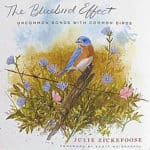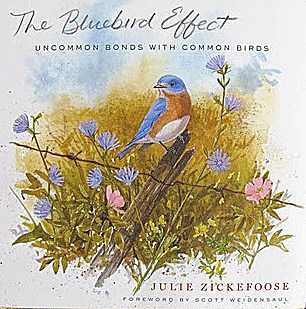 Over a decade of birdwatching has taught me that “if you feed them, they will come.” This works with teenagers and a multitude of other creatures, too.
Over a decade of birdwatching has taught me that “if you feed them, they will come.” This works with teenagers and a multitude of other creatures, too.
I became a novice birder when I married my husband, Gerry in 2007. He has been a birdwatcher most of his life and his backyards have always boasted bird feeders and bird houses and he’s been known to grandfather dozens of nest of bluebirds in the spring. His bookshelves were full of bird books when I met him, and they’ve become fuller since he married me.
A few years ago, I had made it my New Year’s resolution to learn more about the 300 species of birds that frequent the Bay State. I wouldn’t say I’ve been consistent with this goal, but I’ve learned that I can at least impress my grandchildren with a few names and facts here and there. And so, this past weekend found me reading An Introduction to Massachusetts Birds by Christopher Leahy. It’s a short paperback book, pamphlet-sized actually, published by the Massachusetts Audubon Society in 1975.
My grandchildren are certain to quickly surpass me in their birding knowledge and I’m going to have to learn fast to keep up. One of our youngest, 1-1/2 year old Maeve, was pointing out the dark-eyed juncos by our feeders this past Sunday morning within minutes after Gerry pointed them out to her. Three-year old Phoebe is well aware that she bears the name of one of her Papa’s favorite birds and he’s taught her the Phoebe’s birdcall. Papa and Phoebe counted over 50 robins in our front yard last weekend. Papa and I watch the male and female cardinals who visit our yard year-round with 2-year old twins Ava and Judah 1-1/2 year old Gabby. We can’t wait for our youngest, 2-month old Jack, to learn to watch for and point out Great Blue Herons as they pass overhead at dusk each summer evening on their way to the rookeries with food for their babies.
Over the past four years, since moving into a weekend home on the south coast, we’ve welcomed more and more species of birds. Our journal notes over 45 types from juncos just before the start of winter and the starlings and blackbirds in the first days of spring. Red tail hawks have landed on our woodpiles, always seeking the most vulnerable of the birding and natural world. We’ve seen our feeders go instantly still, birds suddenly freezing one second to the next, hoping the hawks won’t detect a breath or shiver. Gangs of mourning doves gather below our feeders and coo their delight in the seeds that have been generously dropped by previous visitors.
When reading Leahy’s Introduction to Massachusetts Birds, I was aware that his words of wisdom in the very first chapter of the book were true. If your feeders are full, and if you create a welcoming space, the more likely the birds will come. Gerry and I know that when we’ve been absent for a just a few weeks, and our feeders are empty, that it takes at least 24 or 36 hours before the word is out. There is food again! And the backyard birds return to visit.
Julie Zickefoose is the author of some of the most enjoyable books about birds. She and her husband, Bill Thompson, editor of Bird Watcher’s Digest, both blog and write about birds from their home in Whipple, Ohio. (Yes, Whipple. Named after the stream Whipple Run. Named after the man who tripped and fell in the stream. True story.)
Husband Bill Thompson has written numerous birding books, among them Birdwatching for Dummies. He’s also collaborated on books with his wife, Julie as the illustrator. Some of those are The New Birder’s Guide to Birds of North America (2014) and Identify Yourself: the 50 Most Common Birding Identification Challenges (2005) and Natural Gardening for Birds (2001). They’ve collaborated on books for children such as The Young Birder’s Guide to Birds of North America (2012) and they’ve written and illustrated many more.
Zickefoose started her career as a field biologist and became a nature illustrator, using her own experiences with birds and animals in Appalachia. She is a contributor to both NPR’s All Things Considered and Bird Watcher’s Digest, writing articles and submitting cover paintings the magazine. (Her website includes many other examples nature, including mammals, amphibians, reptiles, insects and plants.)
Books written and illustrated by Zickefoose are enchanting works of art. The lovely prose and the beautiful artistic renditions make them my favorites. The Bluebird Effect was published in 2012. Baby Birds was just released just months ago in 2016.
The Bluebird Effect is a published journal full of wonderful essays about a variety of birds, organized by season. Among many other species, spring includes the bluebird, summer the osprey, fall the red tail hawk, and winter the mourning dove. Zickefoose questions whether bluebird and their nests would survive without the gentle nurturing of their human beings’ concern. That is also true of Osprey that live bountifully along the south coast of Massachusetts where many organizations nurture their nests. These shorebirds summer in tall coastline habitats, built by humans who care enough to nurture them.
Zickefoose’s latest book, Baby Birds: An Artist Looks into the Nest (2016), is a wonderful book to peruse with a preschooler. The artist’s renditions chronicle the bird from egg through chick to fledgling. The book includes all Eastern species including house sparrows, northern cardinals, tufted titmouse and ruby-throated hummingbirds. When reading to a 3 or 4-year old, almost all of the prose can be abbreviated. The illustrations can tell the story.
Sharing nature, particularly wildlife such as birds, can be an added bonus to everyone, whether it be with your children, friends, grandchildren, or spouses. Bill Thompson brings their children, Phoebe and Liam, birding and points out reasons why children should become birders early in life. I agree with Julie Zickefoose who claims “Every day I find something new.”
Charlotte Canelli is the Library Director of the Morrill Memorial Library in Norwood, Massachusetts. Read Charlotte’s column in the January 26th issue of the Norwood Transcript and Bulletin.


